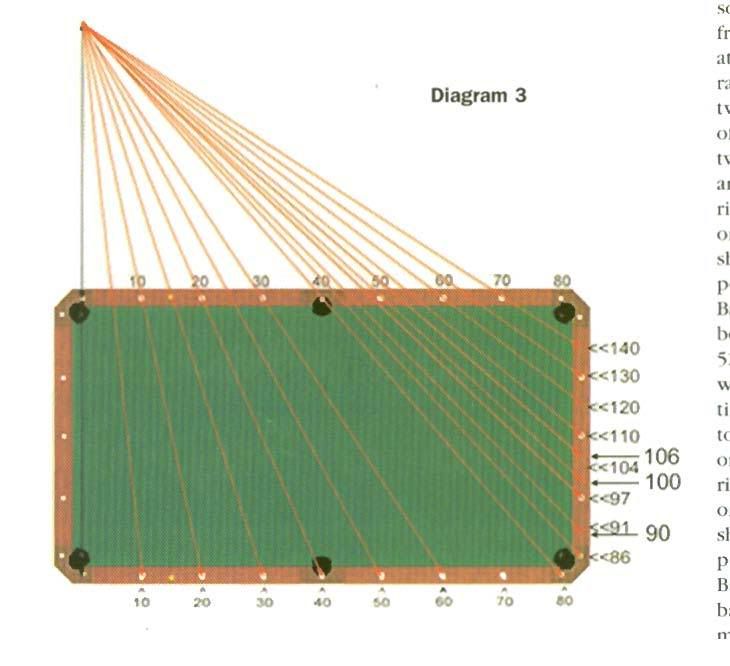Any help? I'm horrible at these... mainly when the ball is close to against the rail.
Just looking for easy ways to do a tough shot for me.
Just looking for easy ways to do a tough shot for me.
Howdy Southpaw--- Great to see you and girlfriend are on again!!! nice ass!!!!Southpaw said:There is a really good book and video that will help you with this bank and many many others. Its called Banking With The Beard.....
Southpaw
madhaterm3 said:Any help? I'm horrible at these... mainly when the ball is close to against the rail.
Just looking for easy ways to do a tough shot for me.
For balls that are going cross-corner or cross-side, it is easy to set up a target that works for all of them that are going to a particular pocket. Once you have that target set up, you can practice lots of shots quickly. How to set up the target is shown in http://www.sfbilliards.com/articles/2004-09.pdfmadhaterm3 said:Any help? I'm horrible at these... mainly when the ball is close to against the rail.
Just looking for easy ways to do a tough shot for me.
madhaterm3 said:Any help? I'm horrible at these... mainly when the ball is close to against the rail.
Just looking for easy ways to do a tough shot for me.
madhaterm3 said:
this is the type I was refering to. When I use my normal "deflects at the angle it hits the rail" aiming system I am generally off.
av84fun said:I would disregard systems altogether. There is WAY too much variation based on force and english that are often dictated by getting shape for the next shot.
In other words, what's the point of making the bank (unless it is the cheese) if you don't get shape on the next shot.
Just set up an OB inside the first diamond and try to SEE the angle. Shoot SOFTLY (the corners will rattle out more balls than cross side banks) with a tip of high center to get quick natural roll on the CB and make one shot at a time until you can make 10 in a row.
Then shoot the same shot fairly hard to see how much THAT table's cushions shorten the angle. Then shot the same shot with some pace and enough outside english (low and then high) to get the CB out to the middle of the table.
Play each until you make 10 in a row for each variation. Maybe 100 shots total in the series.
All the while you will be burning the angles into your mind.
Then do the same drill between the 1st and 2nd diamonds.
I guess what I am saying is that there is no easy formula that will lead to a high success rate. Rather, just "paying your dues" by shooting TONS AND TONS of banks will seriously upgrade your skills.
Then the trick is to be able to adjust your "default" angles from one table to the next. That is NOT easy which is why most pros avoid banks like the plague...even when they appear to be "on."
Regards,
Jim
madhaterm3 said:Any help? I'm horrible at these... mainly when the ball is close to against the rail.
Just looking for easy ways to do a tough shot for me.

catscradle said:The same way you get to Carnegie Hall. Practice, practice, practice.
deadwhak said:http://CueTable.com/P/?@3KXWR1PLvS@
since i play a lot of one pocket i should be decent at this cross-railer, but i suck at it...need help with this one!
klockdoc:
...Almost all these type shots that will not DK are half-ball hits.